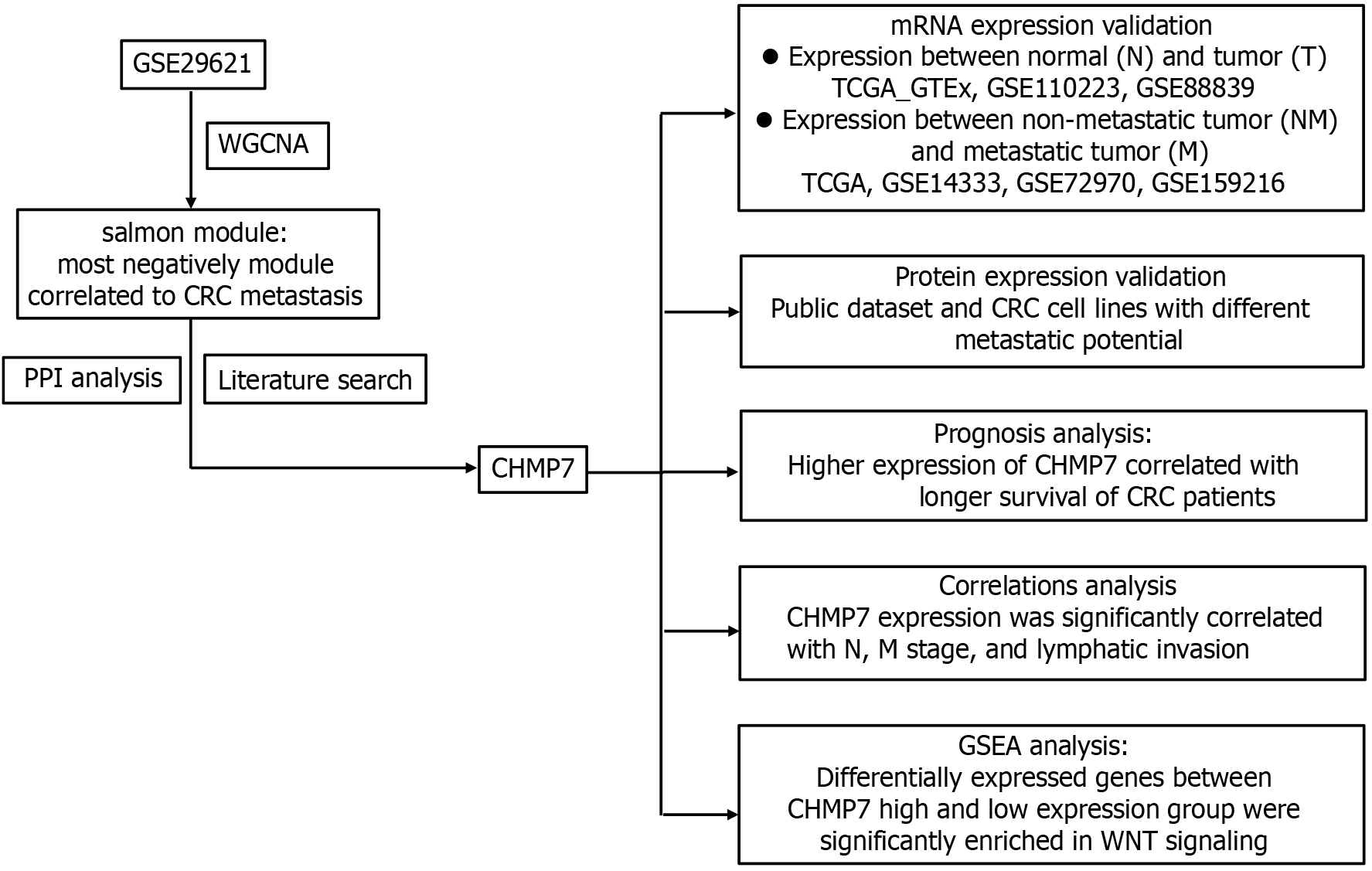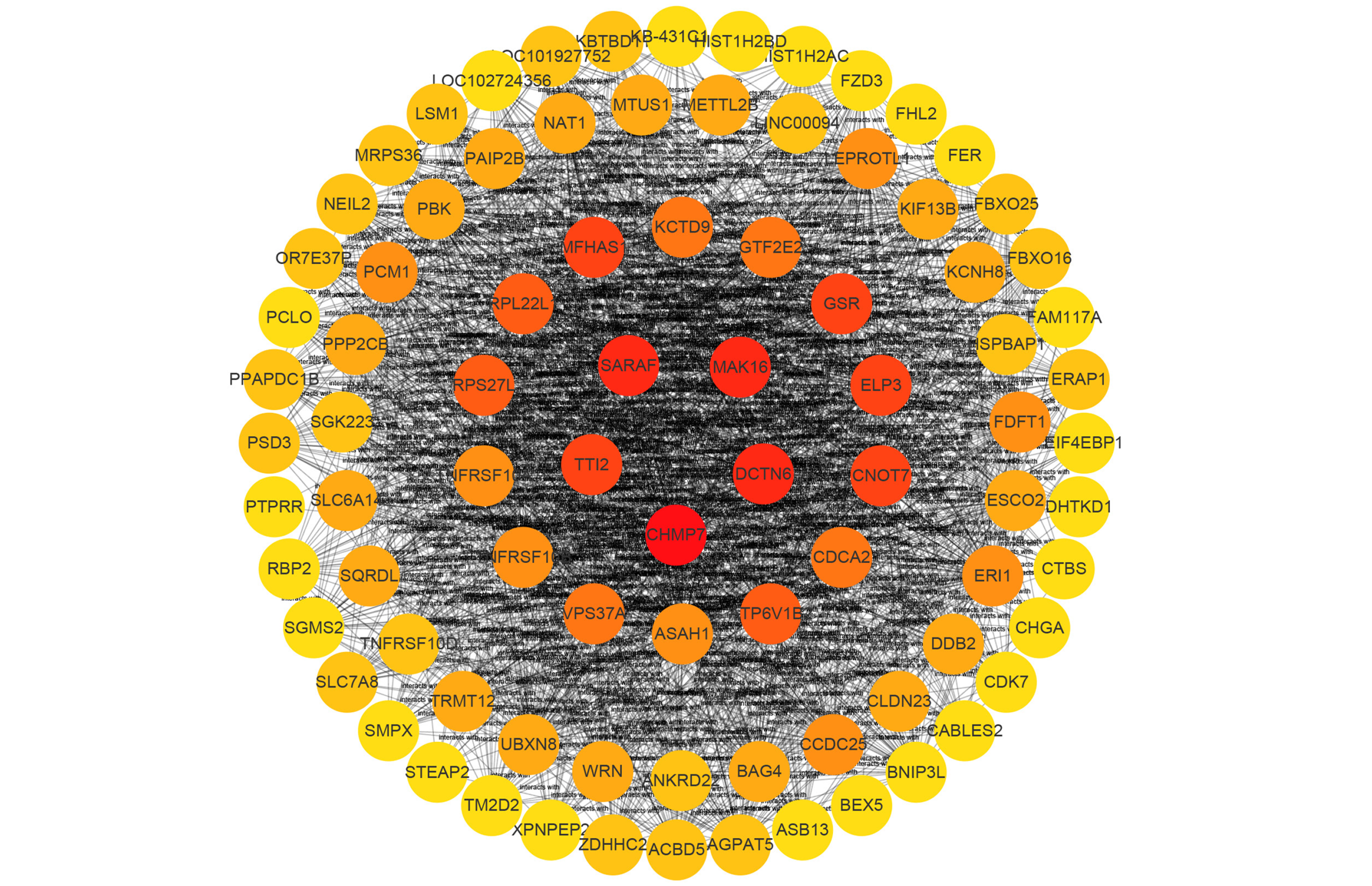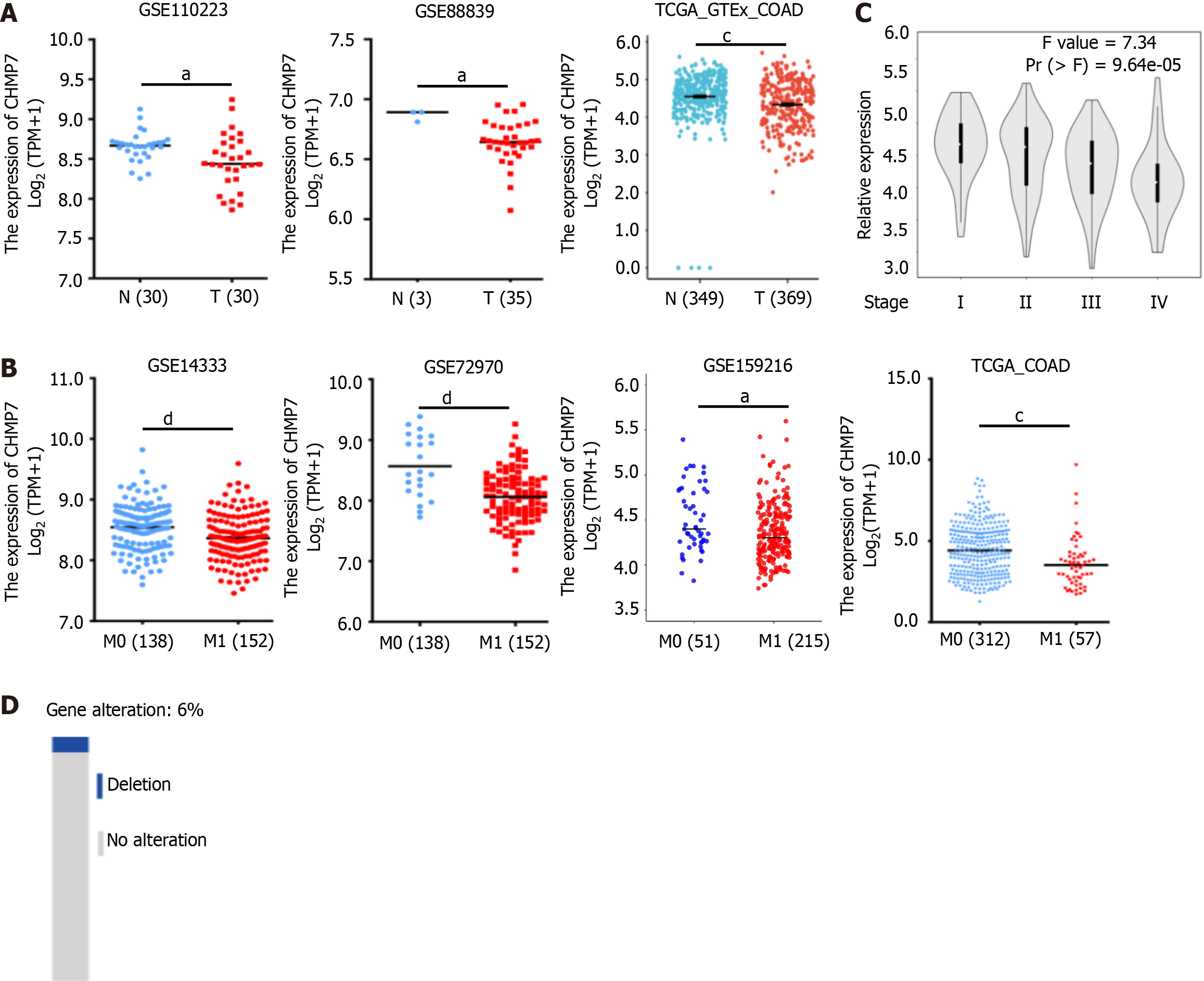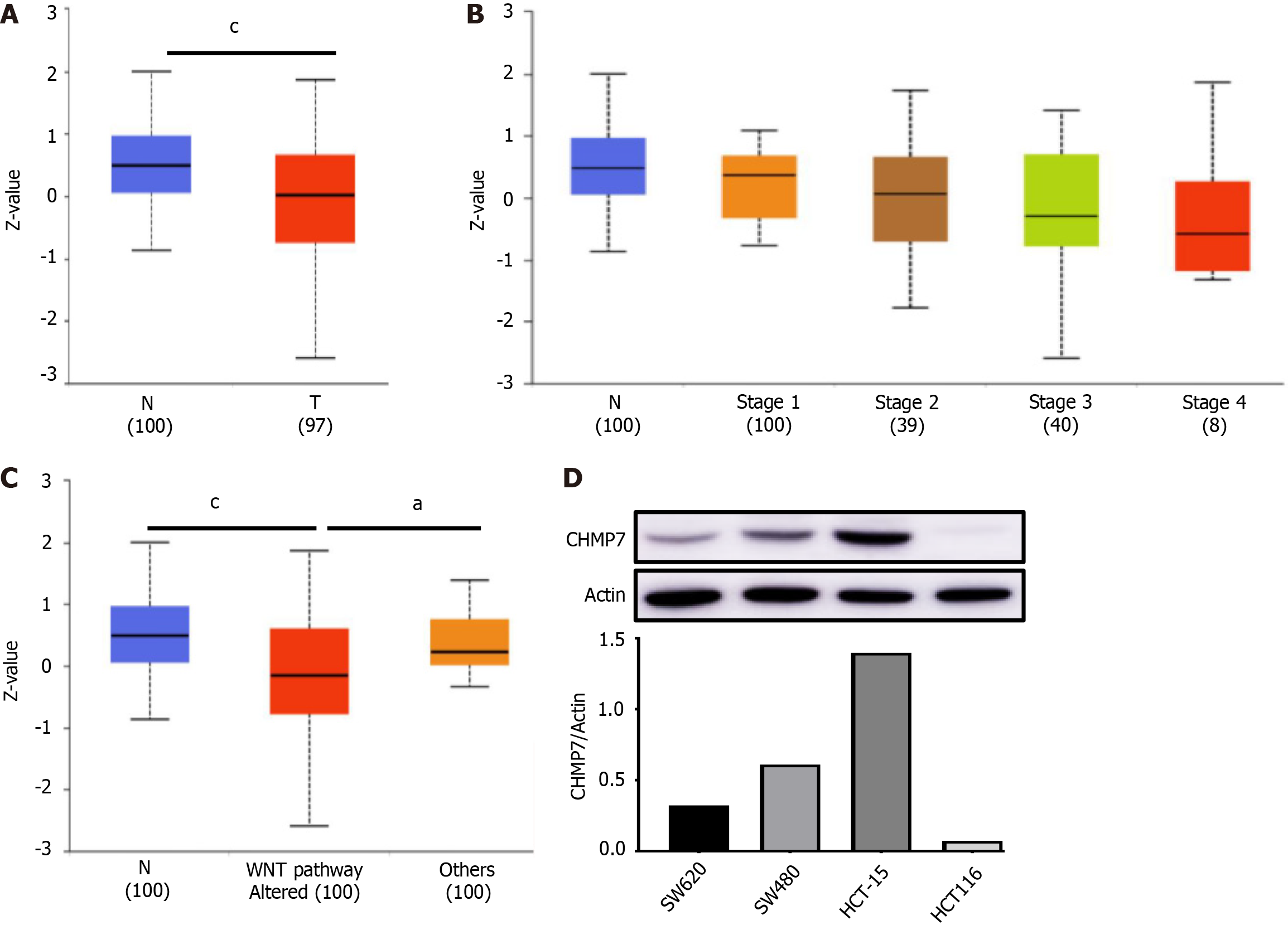Copyright
©The Author(s) 2025.
World J Gastrointest Oncol. Jun 15, 2025; 17(6): 105967
Published online Jun 15, 2025. doi: 10.4251/wjgo.v17.i6.105967
Published online Jun 15, 2025. doi: 10.4251/wjgo.v17.i6.105967
Figure 1 Flow chart of the design.
WGCNA: Weighted gene co-expression network analysis; CRC: Colorectal cancer; PPI: Protein-protein interaction; CHMP7: Charged multivesicular body protein 7; TCGA: The Cancer Genome Atlas; N: Normal; T: Tumor; M: Metastatic tumor; GSEA: Gene Set Enrichment Analysis.
Figure 2 Network visualization.
A: Samples dendrogram cluster and the trait heatmap; B: The appropriate soft threshold power = 4 was selected; C: Gene cluster tree.
Figure 3 Salmon module was identified as the most negatively correlated module of colorectal cancer metastasis.
A: Heat map of the correlation between modules eigengenes and clinical traits. The numbers in the upper part of the square represent the correlation coefficient. While the numbers in parentheses represents the P value. Red color represents the positive correlation, and blue represents the negative correlation; B: Gene significance across modules; C: A scatter plot of the gene significance for colorectal cancer M stage the module membership in the salmon module.
Figure 4 The interaction network diagram of all the 86 genes in salmon module.
Nodes represent genes and a darker color indicates a higher number of connected nodes for the gene.
Figure 5 The mRNA of charged multivesicular body protein 7 was down-regulated in colorectal cancer.
A: The expression of charged multivesicular body protein 7 (CHMP7) between tumor and normal tissues in colorectal cancer datasets from Gene Expression Omnibus and TCGA_GTEx_COAD; B: The expressions of CHMP7 between metastatic and non-metastatic colorectal cancer samples in datasets from Gene Expression Omnibus and TCGA_COAD; C: The correlation between CHMP7 expression and tumor stage; D: Copy number variations of CHMP7 in TCGA_COAD samples. aP < 0.05, cP < 0.001, dP < 0.0001. CHMP7: Charged multivesicular body protein 7; TPM: Transcripts per million; N: Normal; T: Tumor; M: Metastatic tumor; TCGA: The Cancer Genome Atlas; COAD: Colon adenocarcinoma.
Figure 6 The protein expression of charged multivesicular body protein 7 was down-regulated in colorectal cancer.
A: The protein expression of charged multivesicular body protein 7 (CHMP7) between tumor and normal tissues in colorectal cancer datasets from TCGA_COAD; B: The correlation between protein expression of CHMP7 and tumor stage; C: The protein expression of CHMP7 between patients with WNT pathway alteration and non-alteration; D: The protein expression of CHMP7 in colorectal cancer cell lines with different metastatic potential. aP < 0.05, cP < 0.001. CHMP7: Charged multivesicular body protein 7; N: Normal; T: Tumor.
Figure 7 The correlations between charged multivesicular body protein 7 expression and colorectal cancer overall survival.
A: The high expression of charged multivesicular body protein 7 was positively correlated with better survival in colorectal cancer patients; B: A nomogram was established to predict the risk score and survival probability of colorectal cancer patients. CHMP7: Charged multivesicular body protein 7; TPM: Transcripts per million; M: Metastatic tumor; HR: Hazard ratio.
Figure 8
Potential mechanism of charged multivesicular body protein 7 on colorectal cancer tumorigenesis based on Gene Set Enrichment Analysis.
- Citation: Wei JR, Ouyang YN, Tang MT, Yuan JZ, Wang PL, Jiang LH, Wu LC. Charged multivesicular body protein 7 was identified as a prognostic biomarker correlated with metastasis in colorectal cancer. World J Gastrointest Oncol 2025; 17(6): 105967
- URL: https://www.wjgnet.com/1948-5204/full/v17/i6/105967.htm
- DOI: https://dx.doi.org/10.4251/wjgo.v17.i6.105967
















